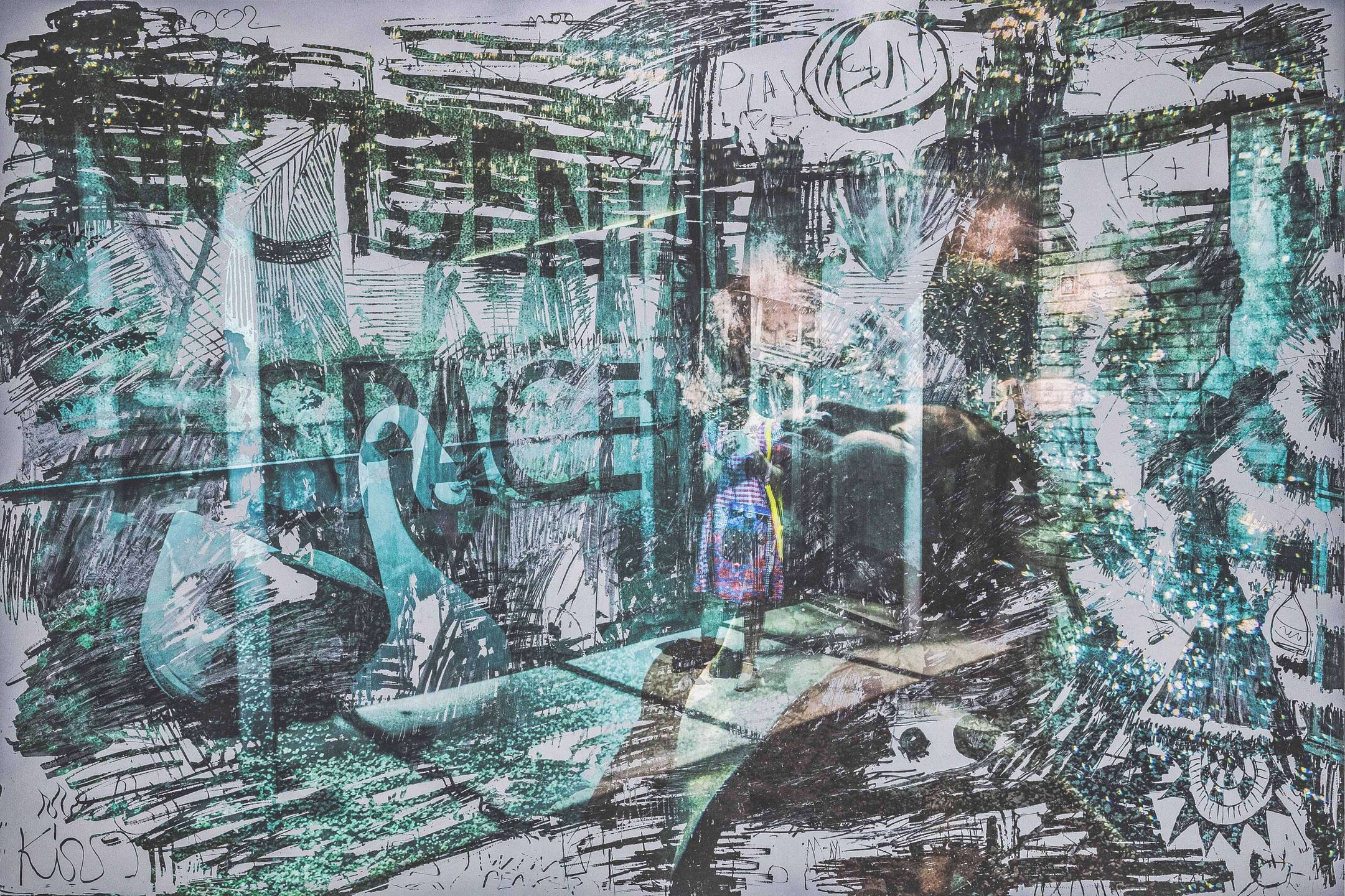
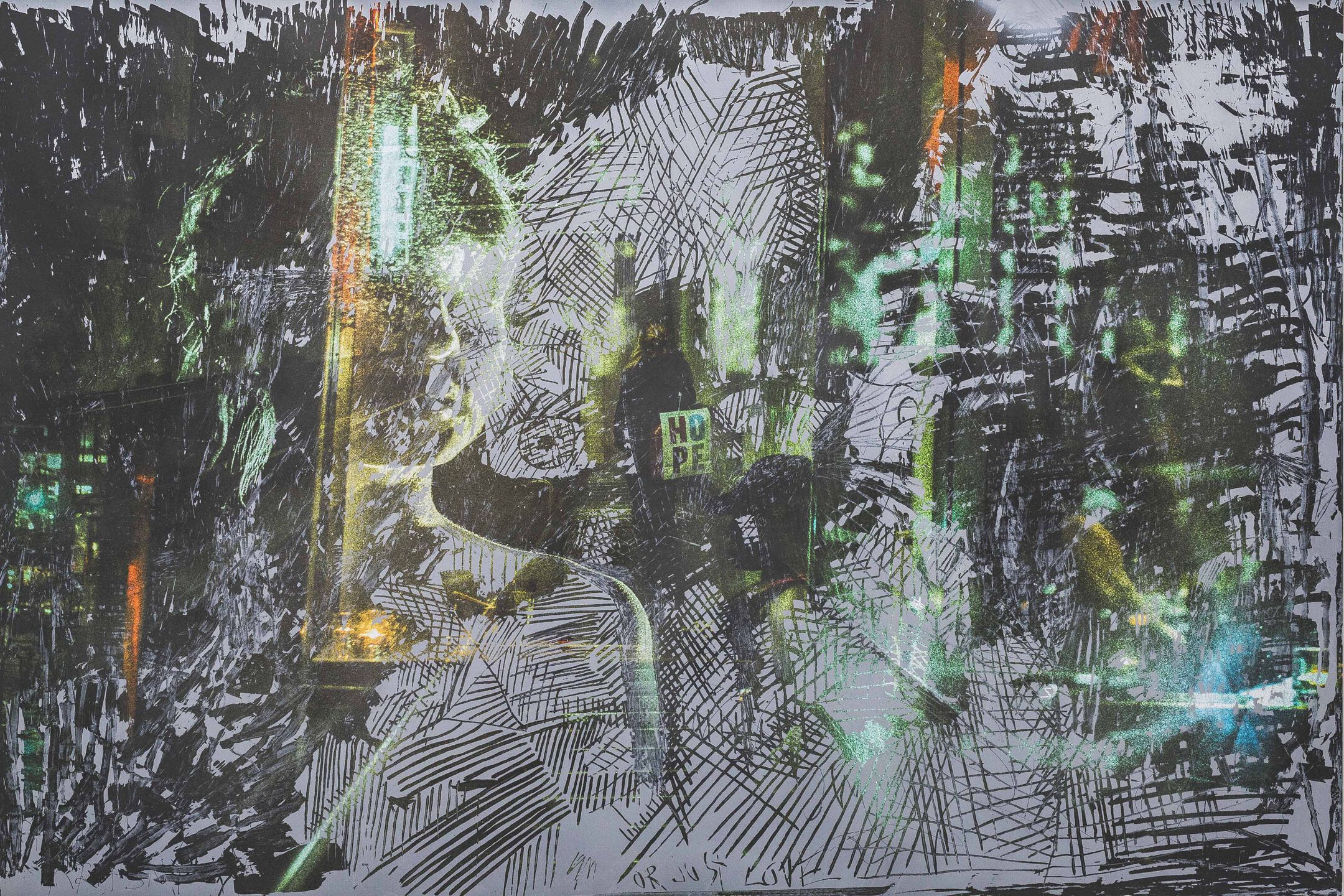

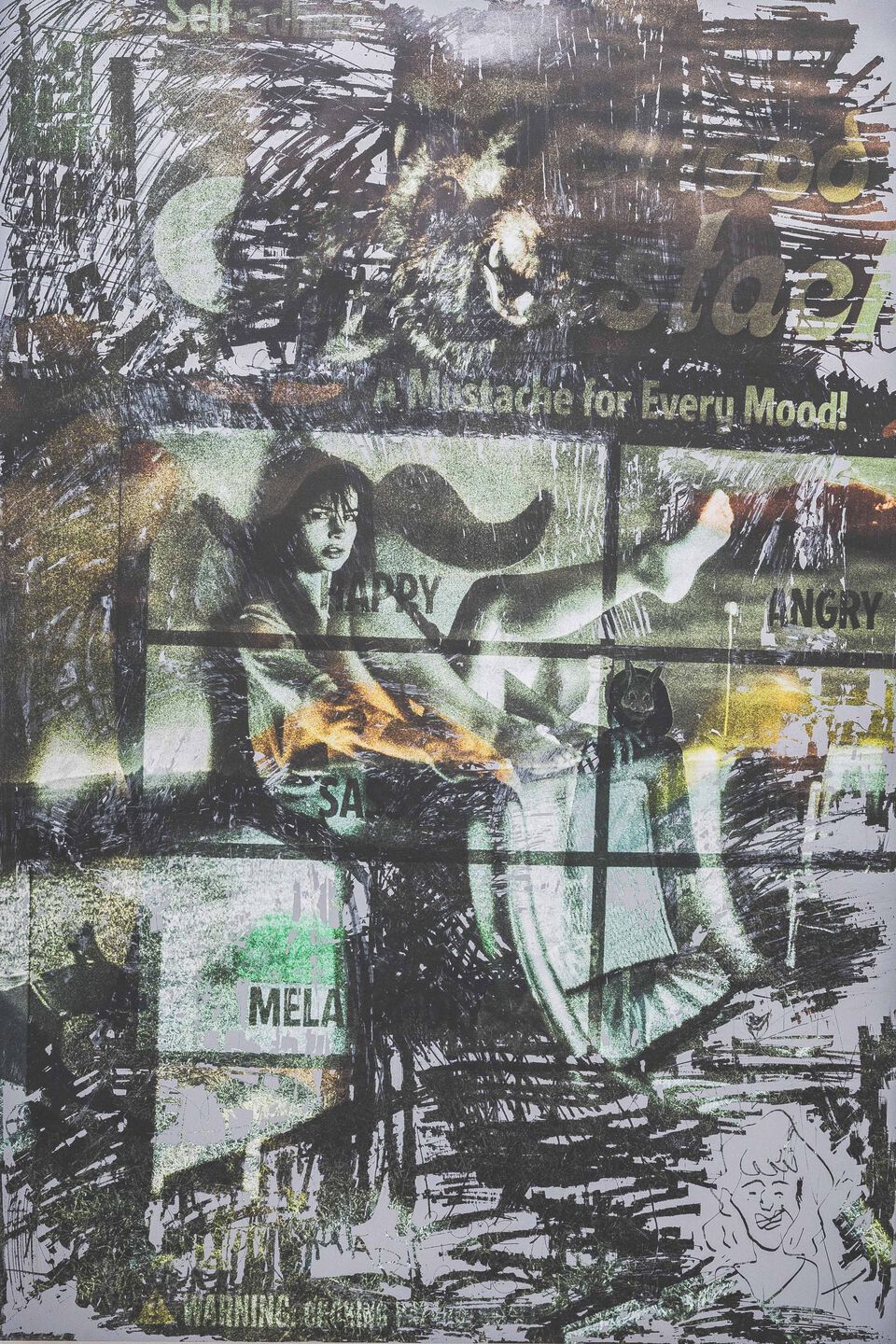
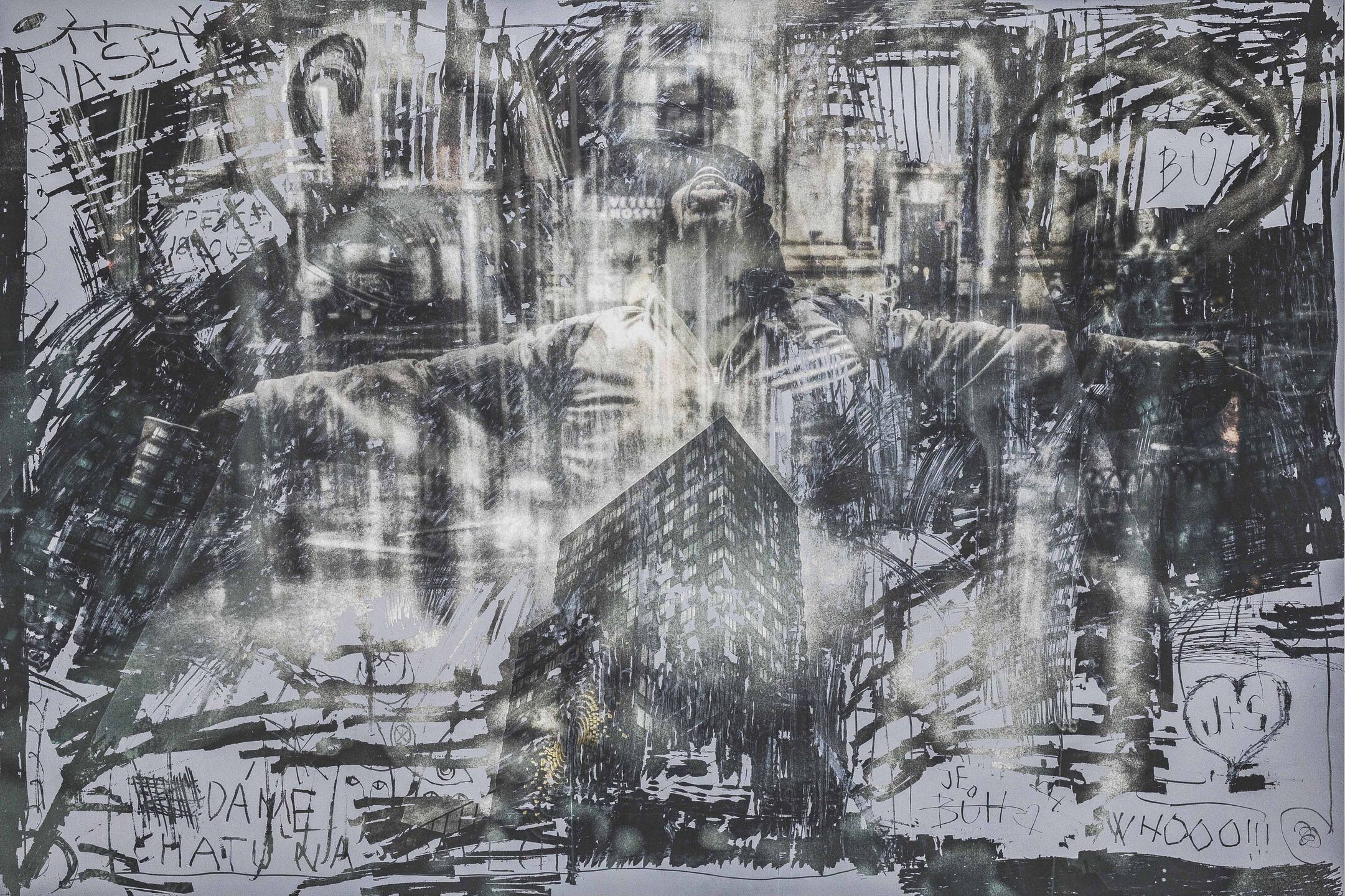






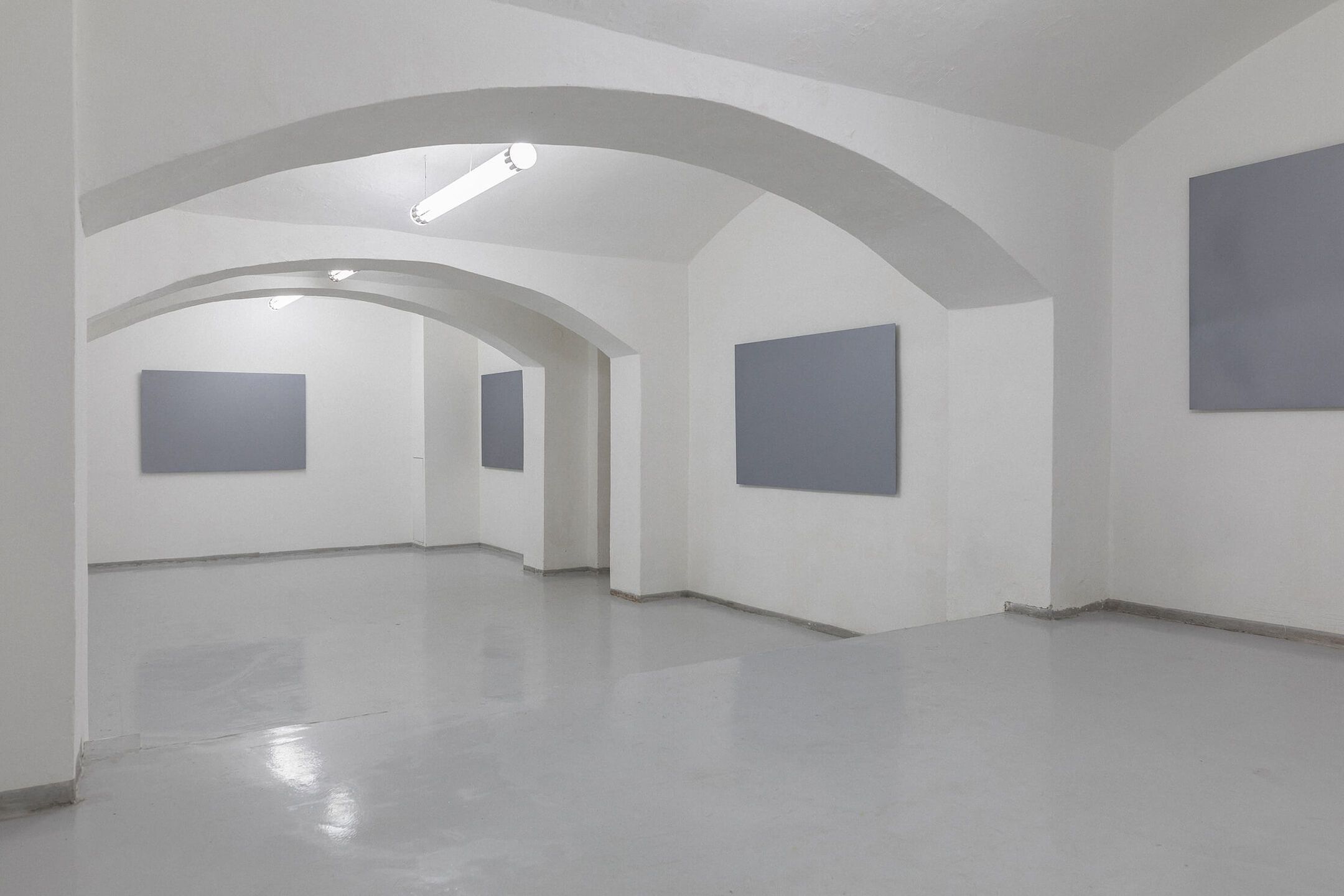

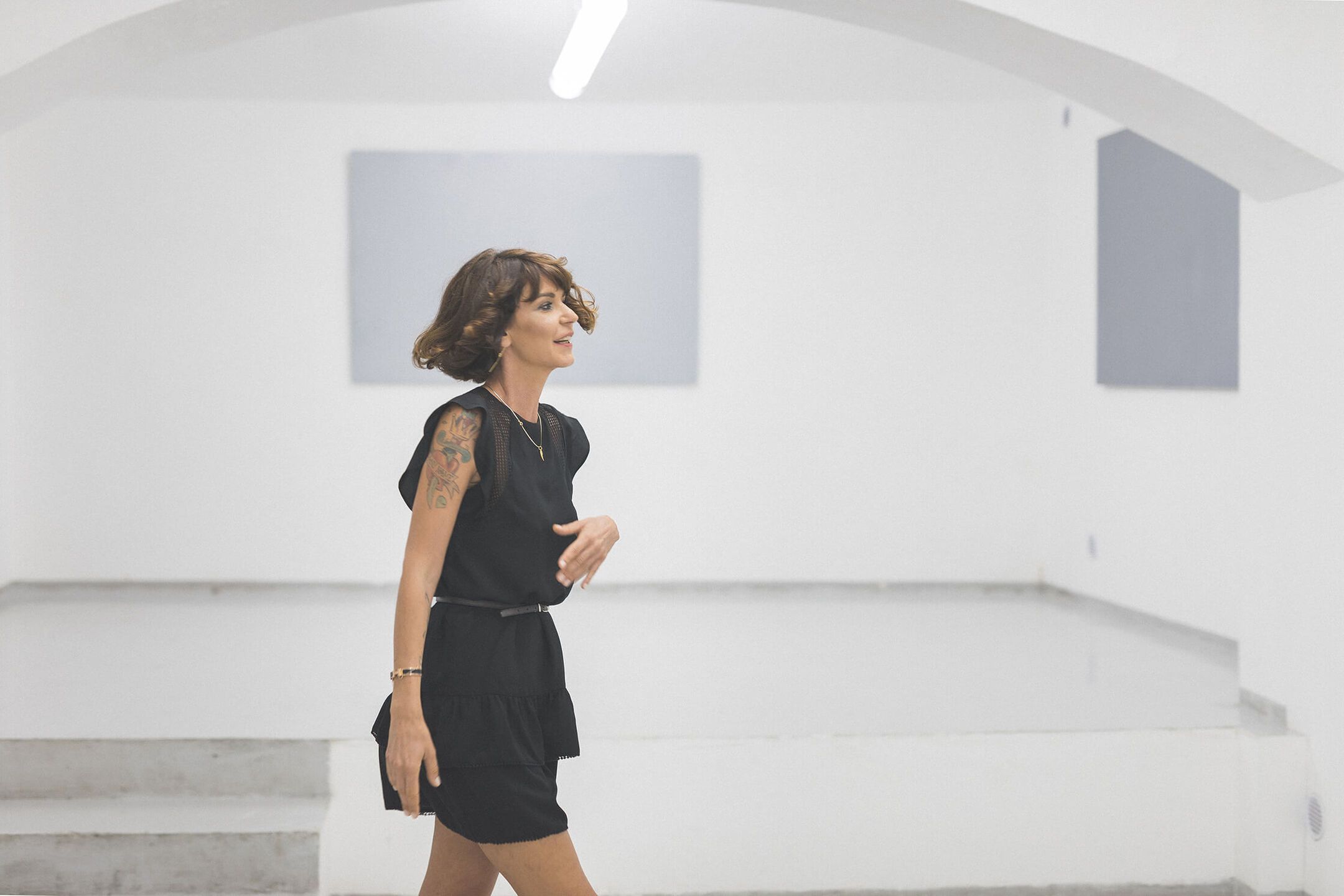
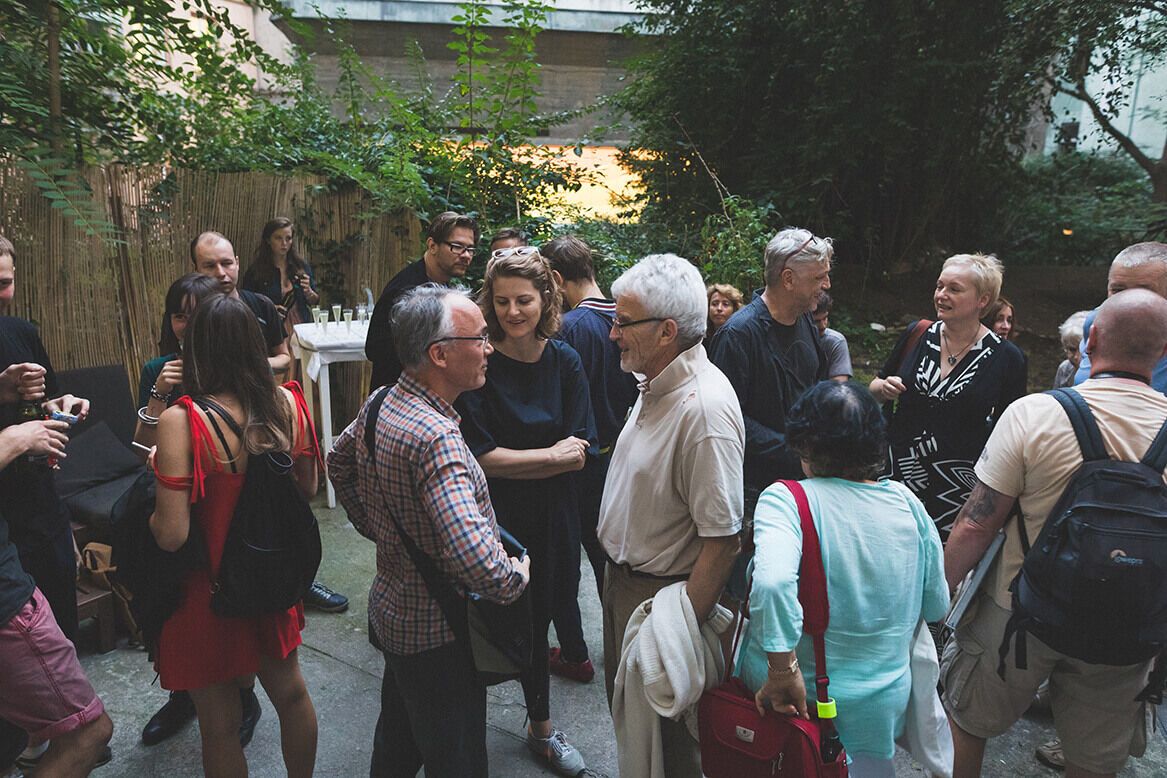
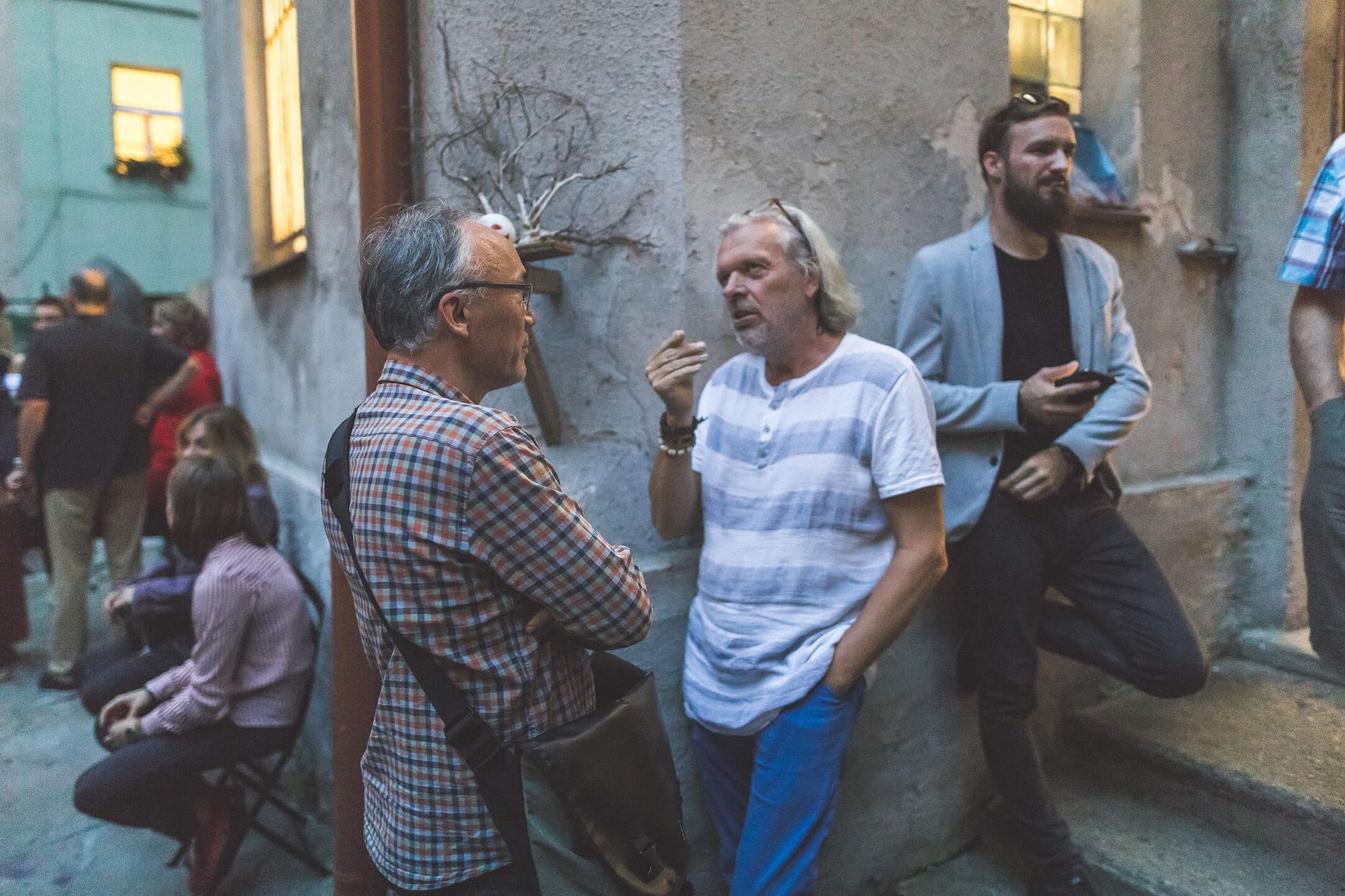

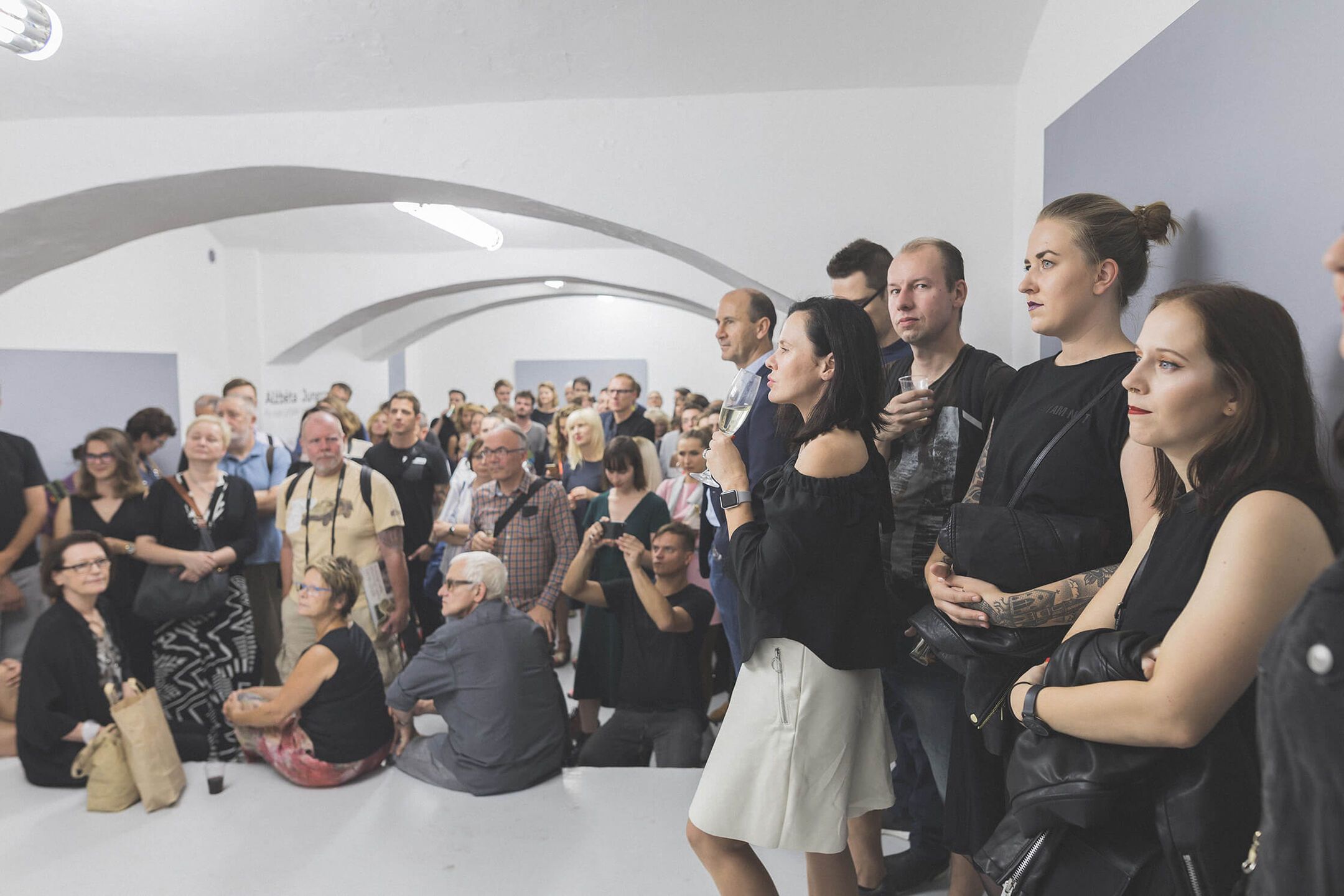

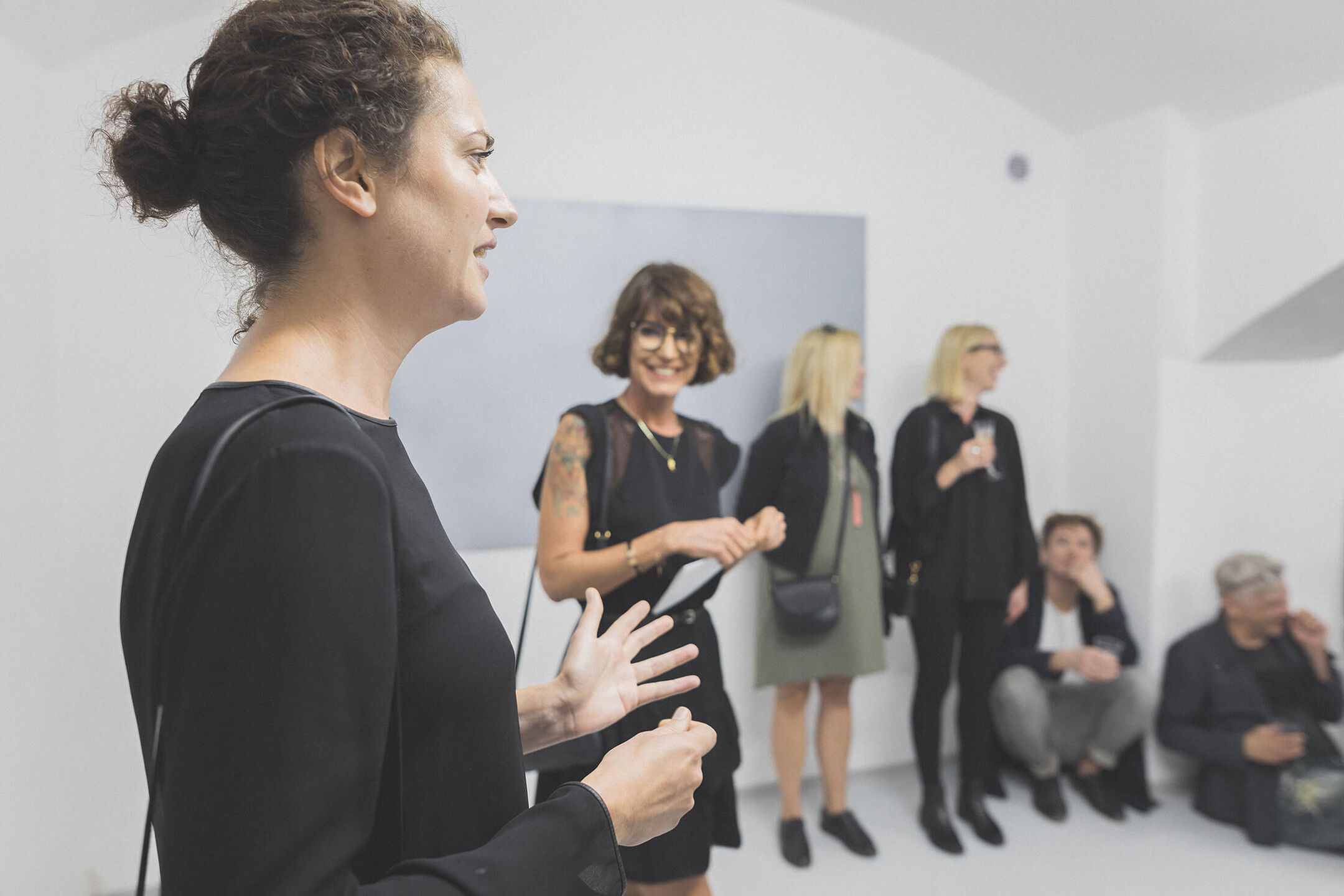

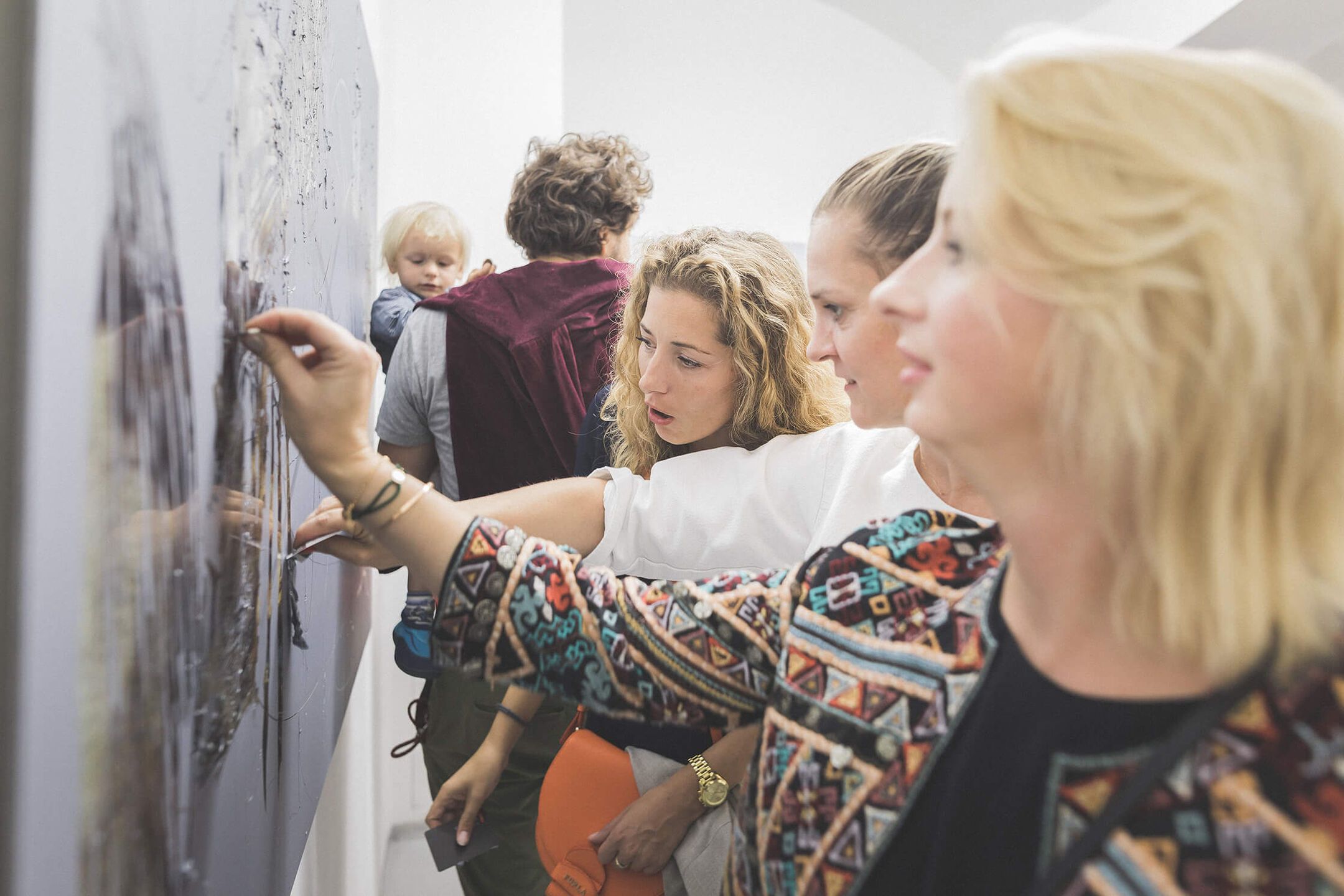
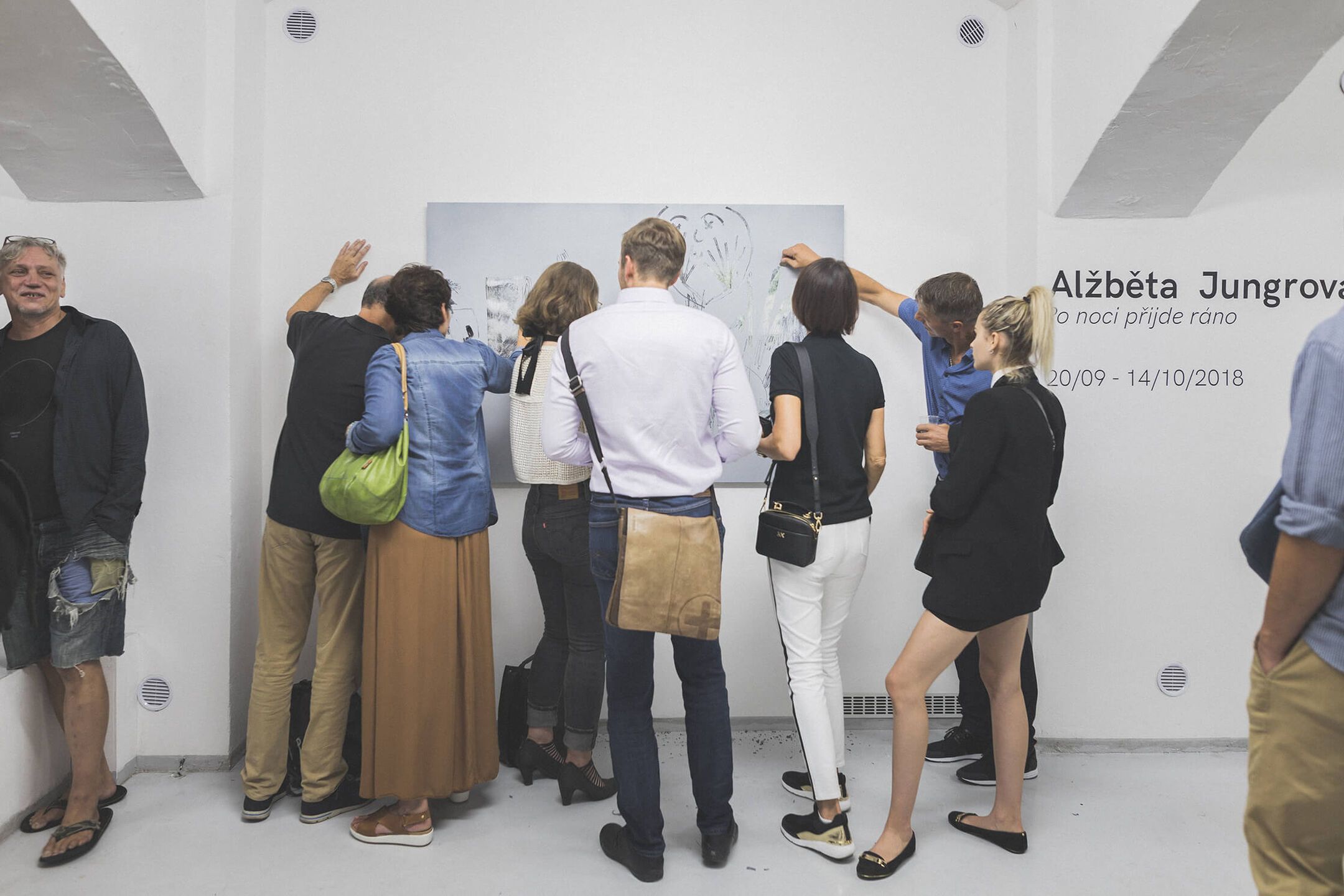
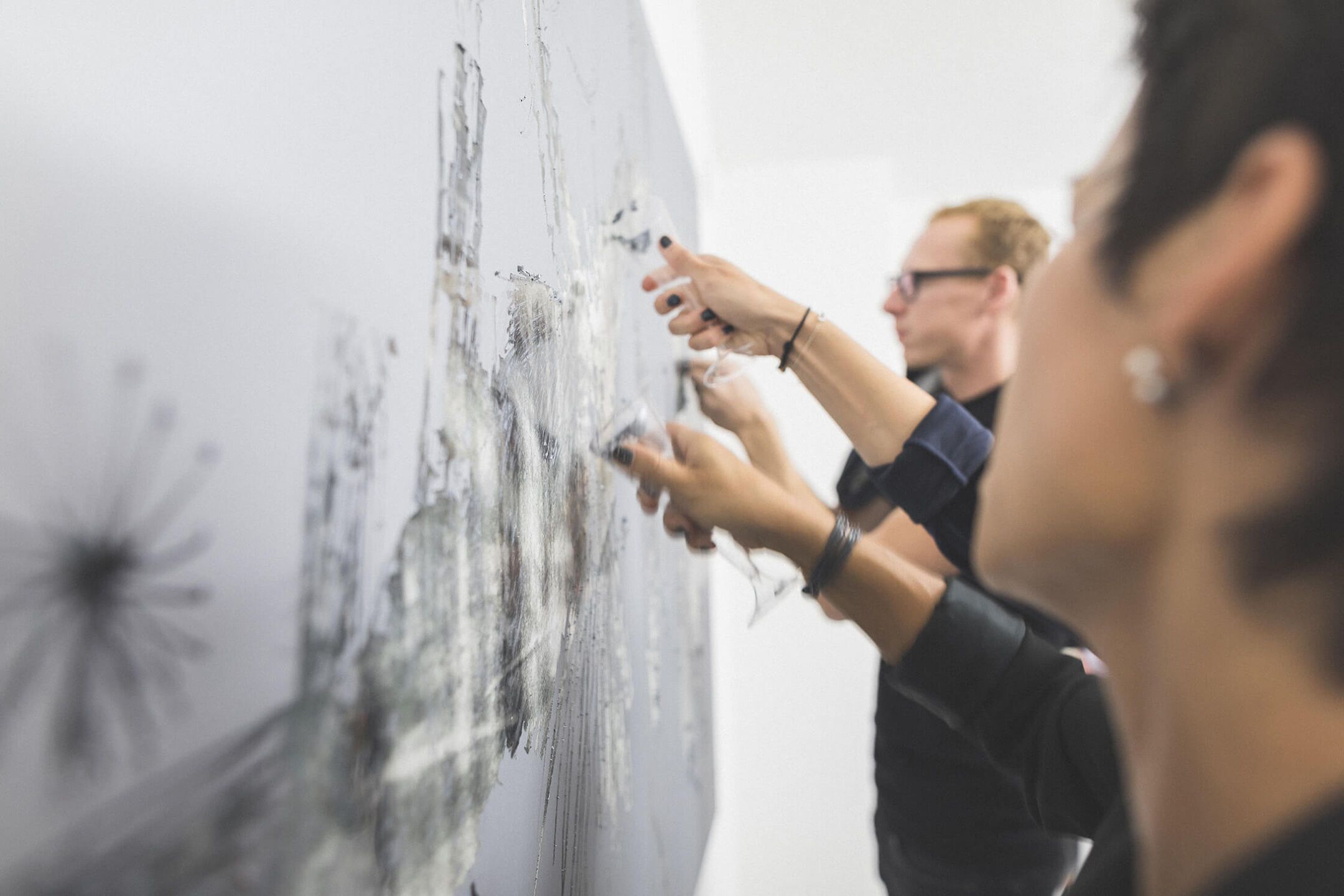
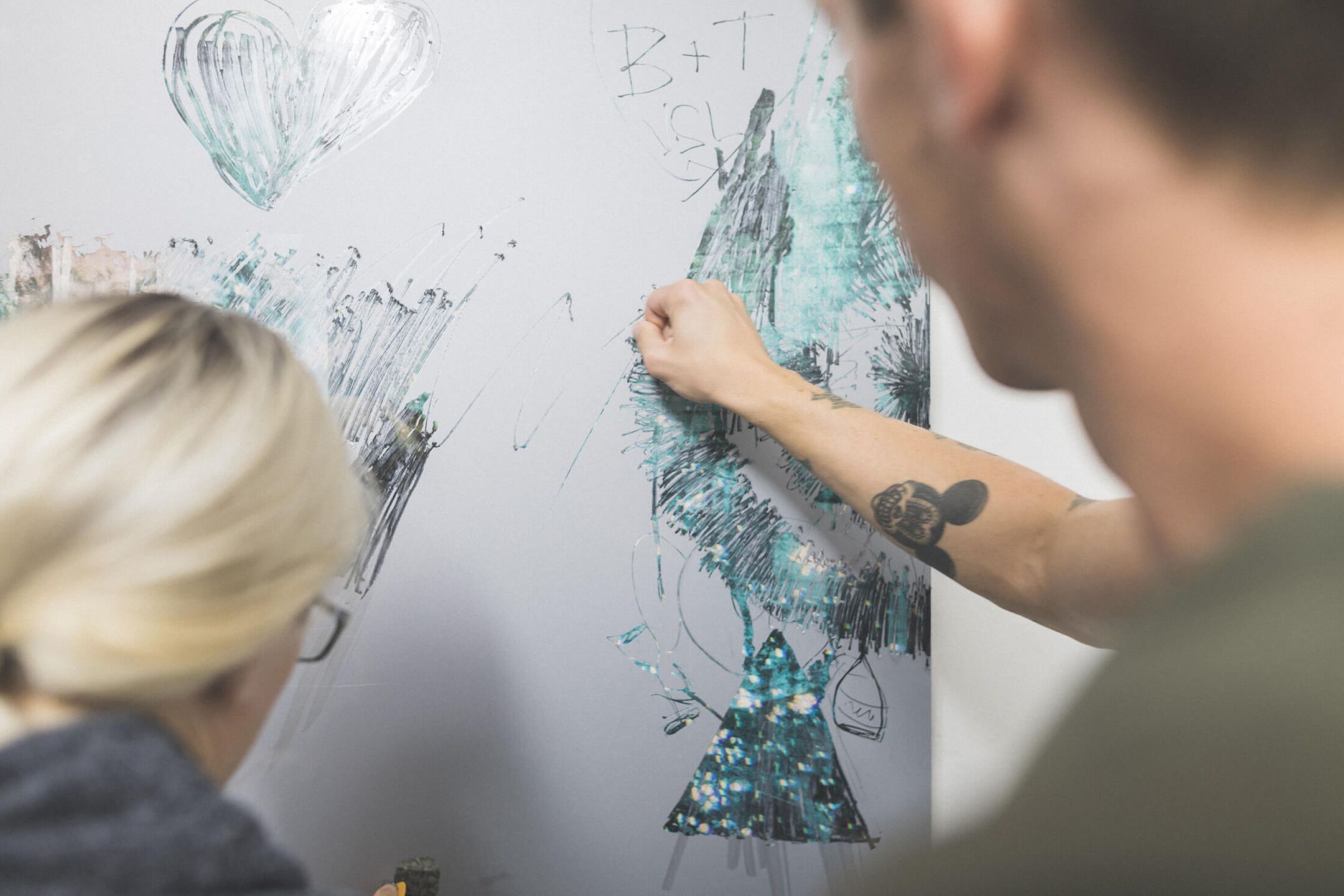


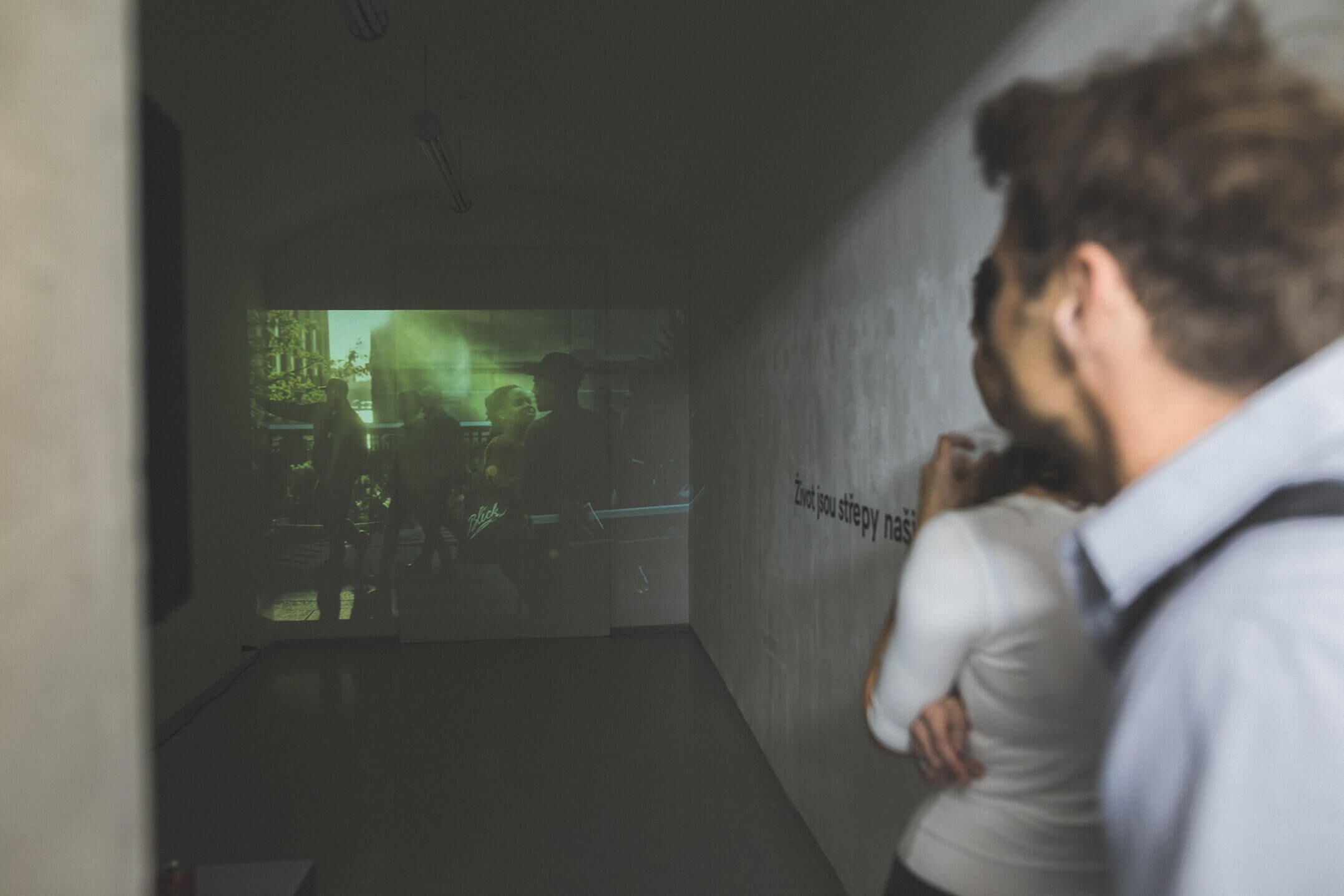


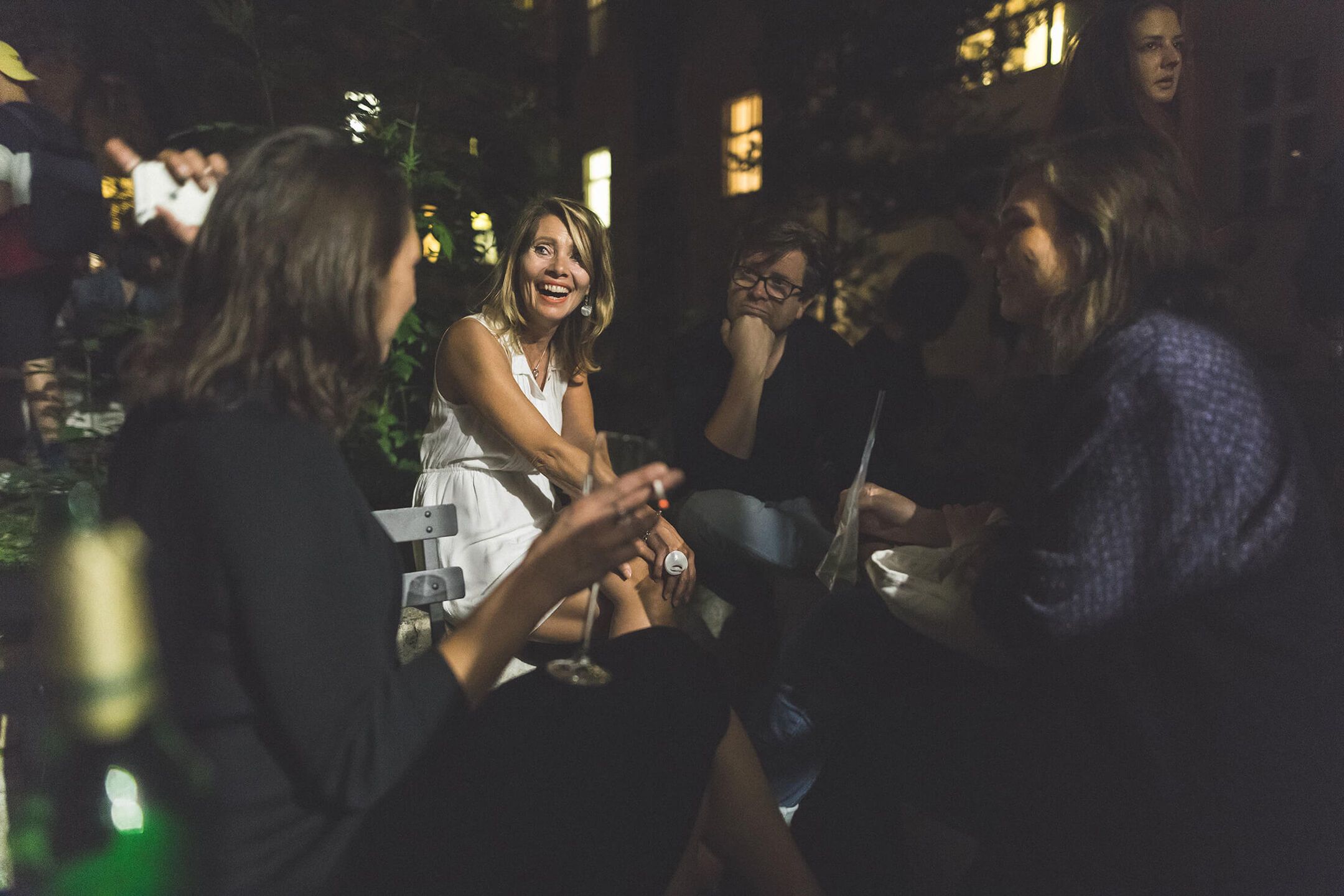
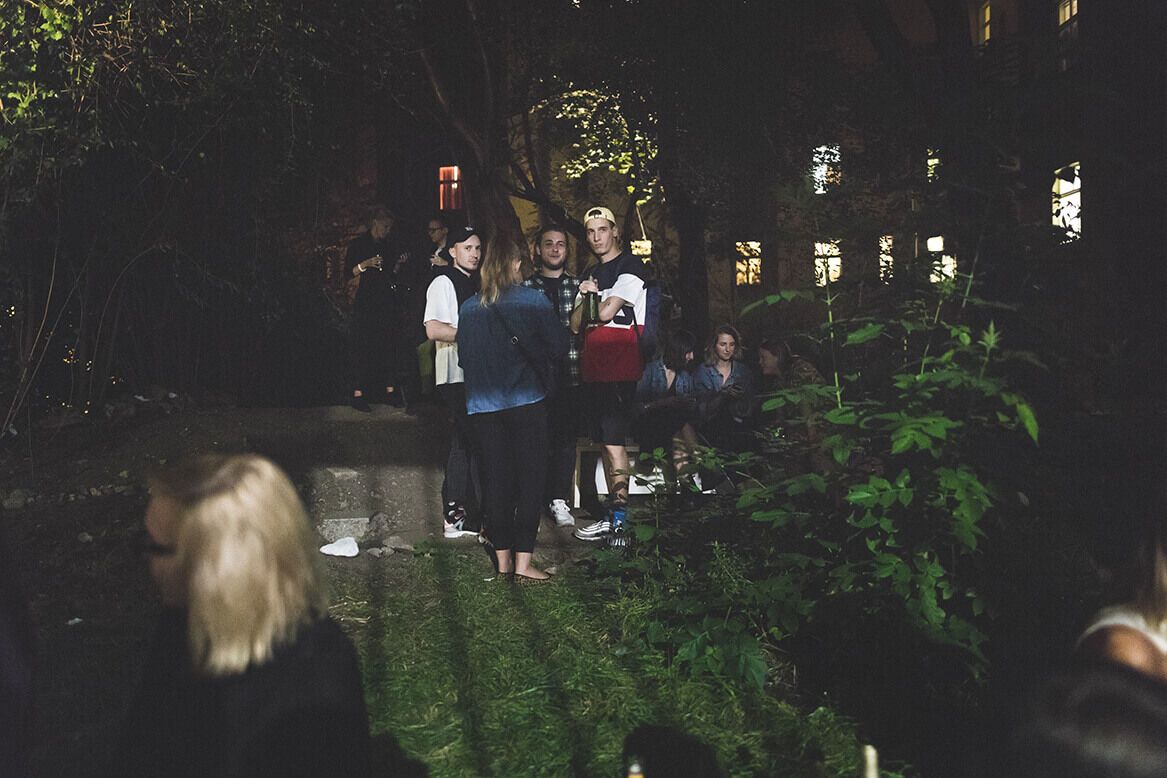
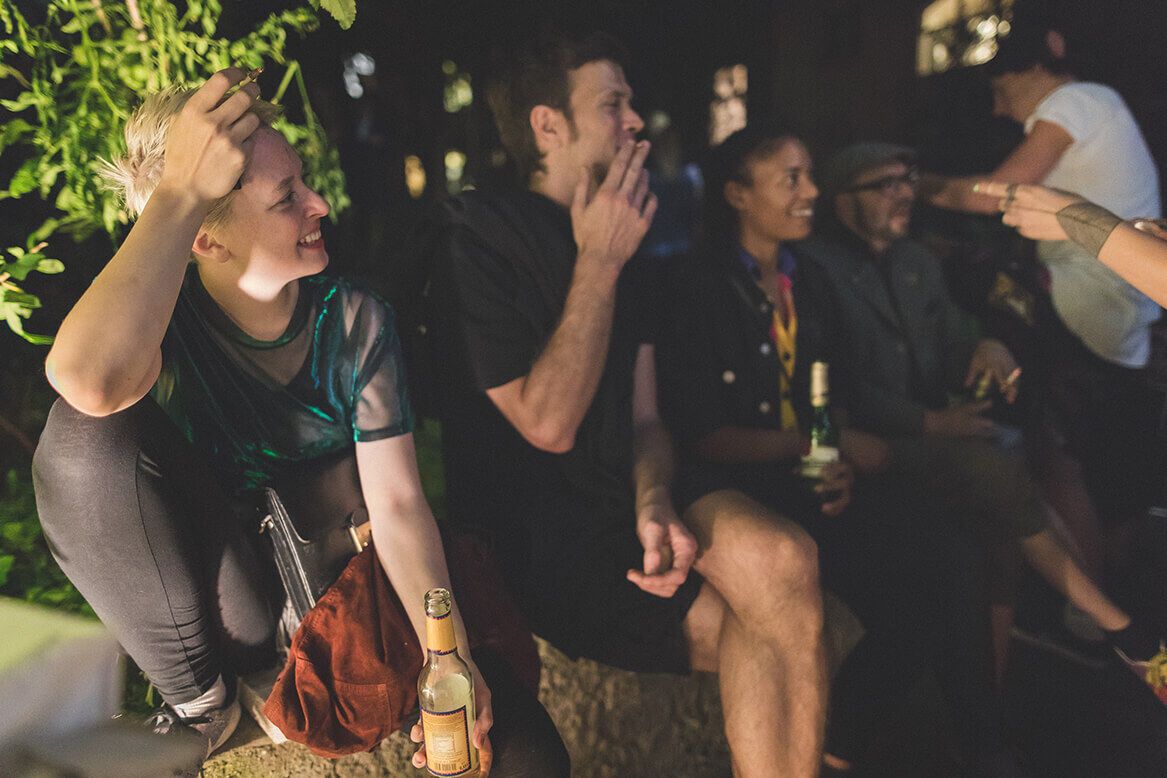
Alžběta Jungrová
Morning Comes After Night
At first glance, the monochromatic silver surface evoking the abstract world appears to refer to nothing else but itself. Such work may seem strange in the context of Ažběta Jungr’s existing photographic production; however, it characterises a particular step towards a creative experiment through which Alžběta’s photographic work moves further into the artistic level. Authorial collages, which have been the focus of the artist in recent years, may be uncovered under the impersonal monochromes. Their cover, created by graffiti spray paints, then refers to her solidarity with the current artistic and graffiti scene, which provides the background to the gradual transition of her interest from documentary photography to the creation of a composed photographic picture.
During the opening, the audience is invited to enter the creative process and take part in uncovering the hidden photographs. The principle of the uncovering is inspired by lottery tickets. However the artist also perceives the process as a reflection of life expectations – in both cases, we have no idea what we find under the surface; the future and its message stay hidden. Fragments of persons, signs or surroundings emerge out of the solid, sterile surface. Photographs of her friends, recordings of feelings in photos of street life she captured in numerous different corners of the world all meet in one place. The process of uncovering carries strong existential connotations and, in essence, it is rather intimate as we discover fragments of Ažběta’s photographic diary documenting her past three years of life.
Gently stylised colouring and lighting, as well as the principle of permeation and reflection of individual moments, lend the collages surrealistically mystical tension, therefore, become even less decipherable to the viewer and their overall appearance just as the precise content stay obscured to the audience. Primarily, they remain part of the subjective and intimate world of the artist, and that is the reason why she also gives no explanation to them and leaves the viewers to their own imagination. The key to reading the collages lies on the emotional level; they communicate various moods and emotions which, in a way, define the existence or nonexistence of human happiness and fulfillment of a life journey, which often brings bitter disappointments. Still, certain pop gesture with the connotation of scratch cards and the silver layer of graffiti spray paints hint at Jungrová not taking that life review fatally but rather with humour and knowledge that positive moments may be found even in the smallest casual joys of life that, therefore, influence the fine gradation between life hope and disillusion. – Barbora Ropková